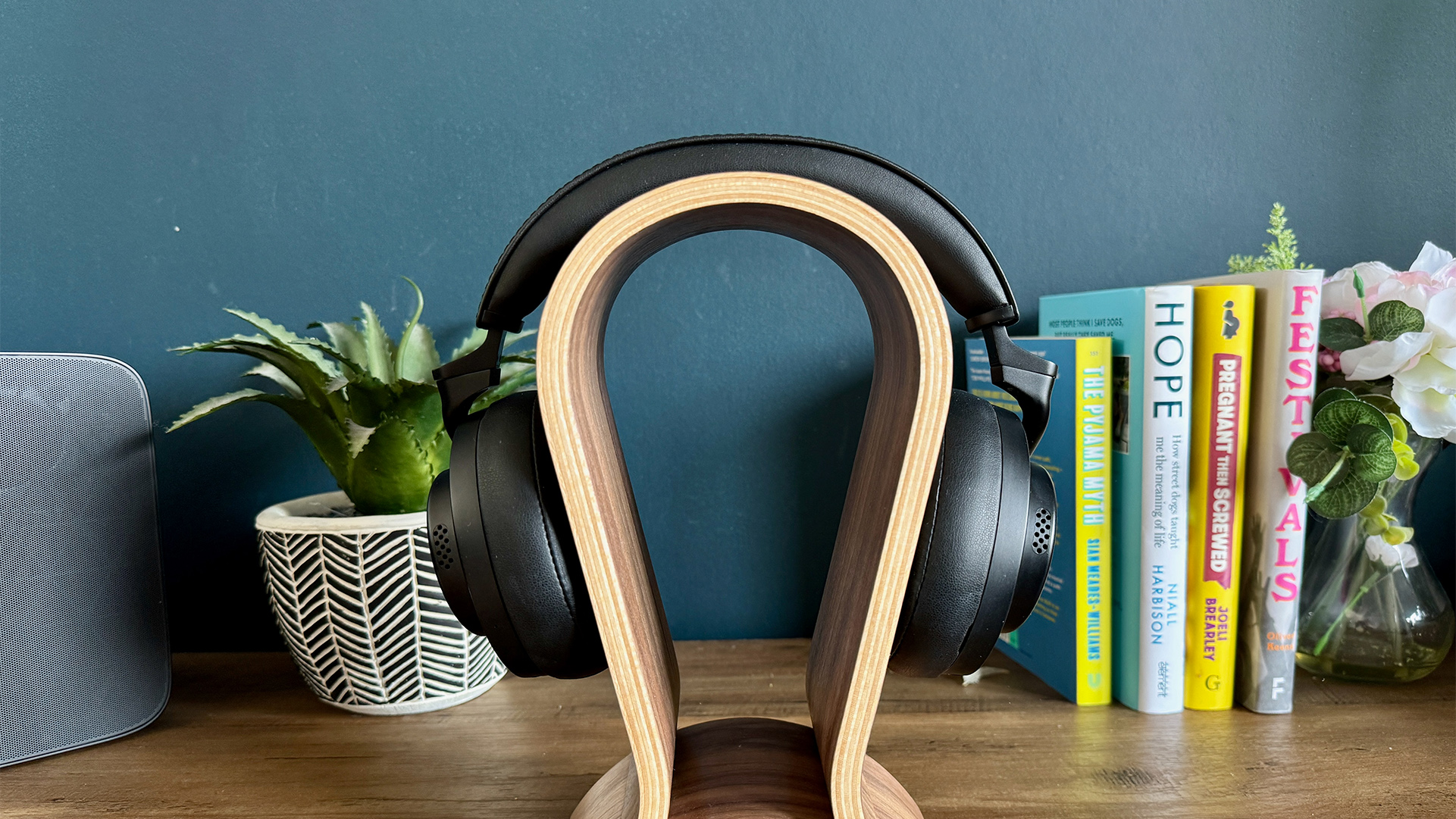
Shure is a brand you’d more usually find mixing in pro-audio circles, with its wide and respected range of microphones, in-ear monitors and wired studio headphones. Artists from Led Zeppelin to Sheryl Crow have used the brand on stage and in the studio – but more recently it’s been tempted to try its hand with a more mainstream audience.
In fact, the Shure Aonic 50 Gen 2 are its third stab at a more consumer over-ear market, and are a pair of wireless noise-cancelling over-ears that, with their £349/$349 price tag, ambitiously take on some of the established greats in this space.
Seemingly unphased by that, the Aonic 50 Gen 2 come with a number of improvements to keep them competitive, including improved battery life, new features and better noise cancellation. But can they hold their own against such sizeable competition?
Price
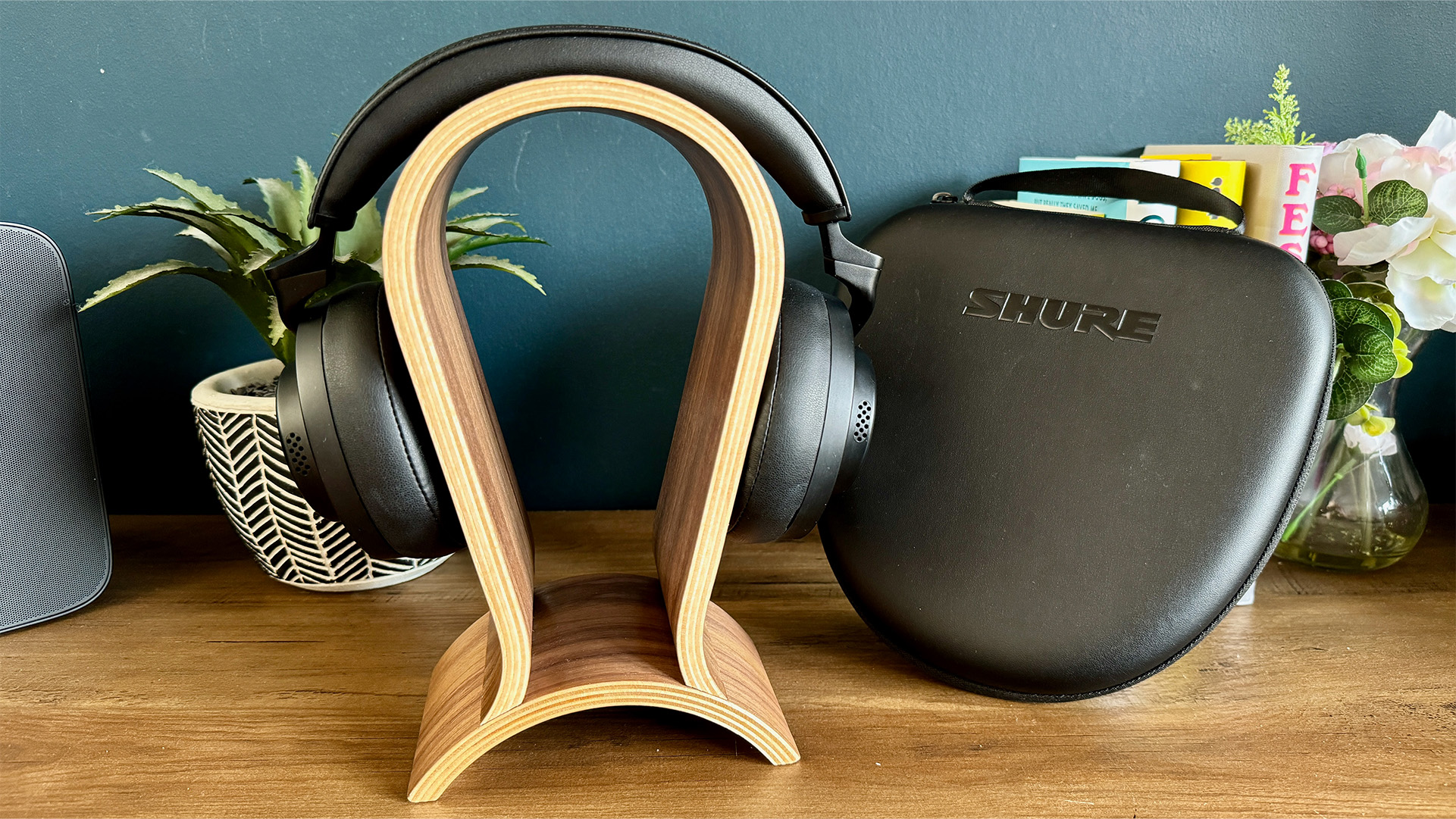
The Shure Aonic 50 Gen 2 were released in September 2023, and cost £349 / $349 / AU$619 at launch. At the time of writing, this price has stayed pretty stable in the US and Australia, but UK buyers can find them for around £50 cheaper with some retailers.
This makes them cheaper than their predecessors – the Shure Aonic 50 – at launch, which cost £379 / $399. However, most cleverly, it makes them cheaper than many of its biggest competitors, like the Sony WH-1000XM5 (£380 / $399 / AU$550), the B&W Px7 S2e (£379 / $399 / AU$599) and the Bose QuietComfort Ultra Headphones (£450 / $429 / AU$649).
Most of these can be found cheaper than their RRP now, but it’s a clear move from Shure to make them that little bit more attractive in a very busy marketplace.
Build & design
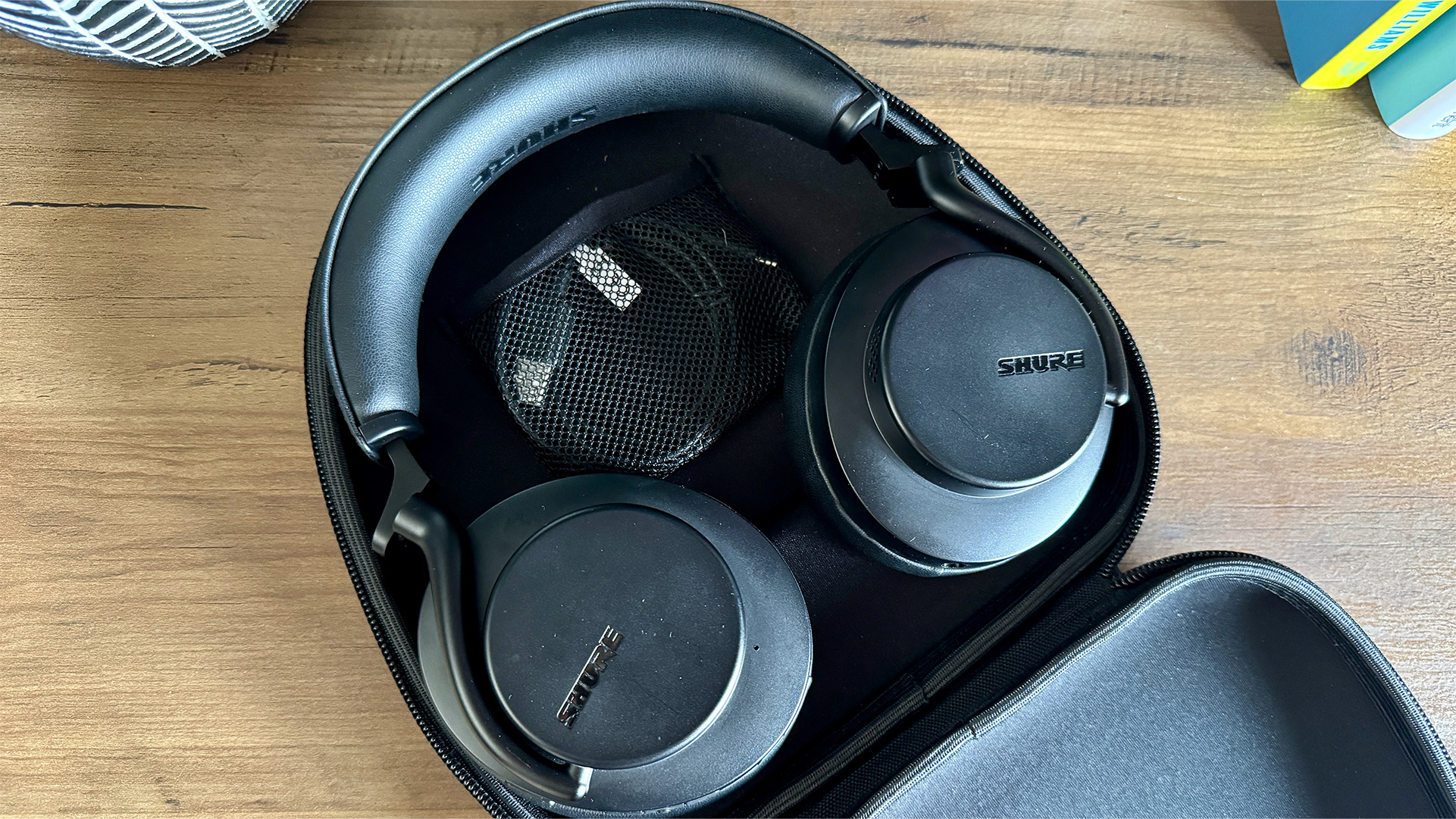
The black-on-black design that Shure has opted for on the Aonic 50 Gen 2 looks very smart indeed, and you’d better like it too if you’re keen on these cans – it’s the only finish available. We think it looks lovely and can imagine it’ll be a hit over the generic black and silver or tan options from last time.
Otherwise, the design is pretty reminiscent of the original Aonic 50, with matte plastic earcups, stylish aluminium adjustable arms and single-arm yoke, with soft faux leather on the headband and earpads.
A glossy Shure logo is placed just off centre on each earcup, with the right side holding all the buttons for control as well as the USB-C port (for charging and audio playback), and a 2.5mm connector only on the left-hand side (for 3.5mm wired playback). Cables for both are included in the box, though the USB cable is USB-C to USB-A; USB-C to USB-C feels like it would have been more useful.
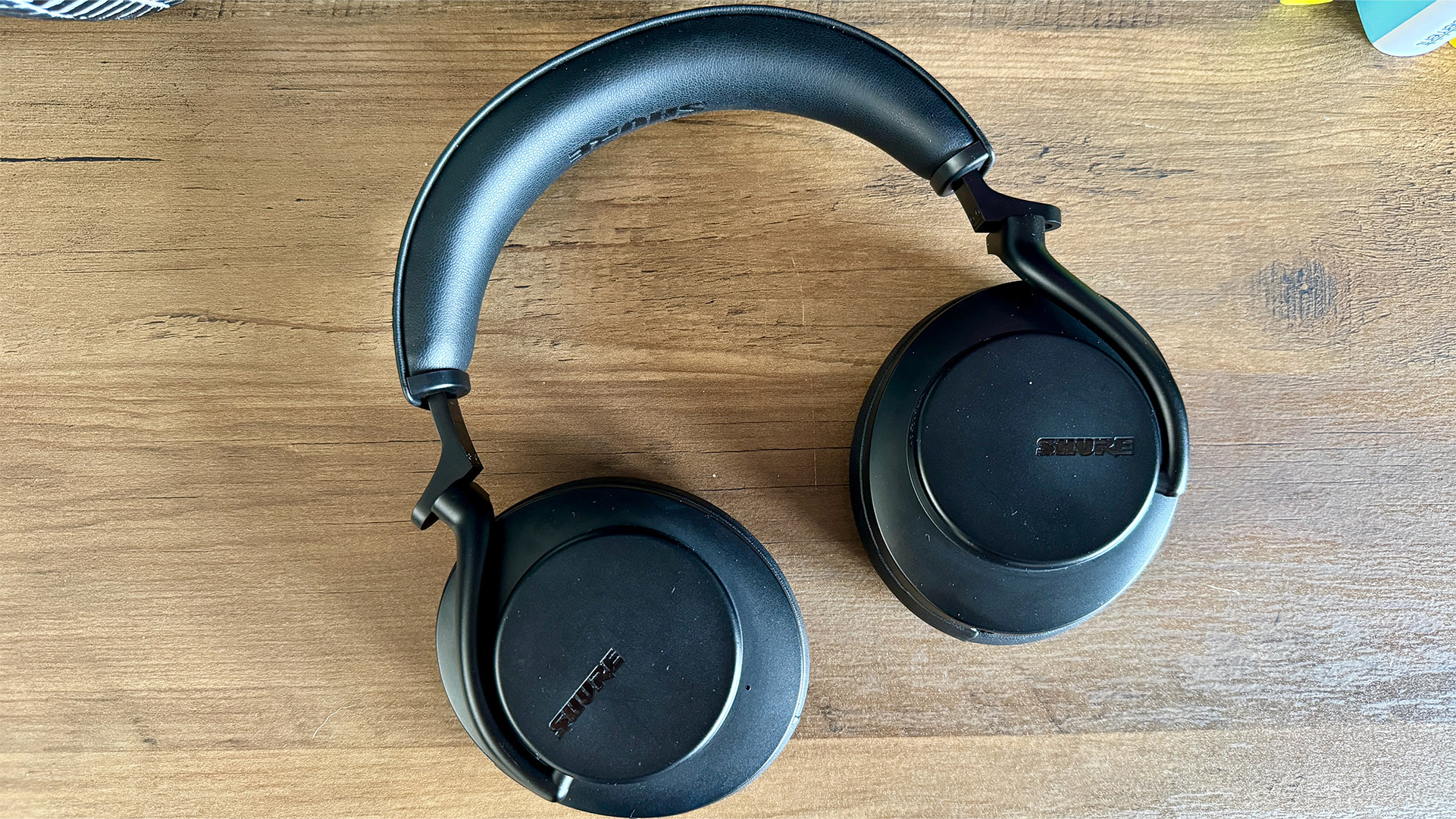
Bluetooth version 5.2
Headphone jack 3.5mm
Active noise cancelling? Yes
Built-in mic? Yes
Amazon Alexa? No
Google Assistant? No
Battery life 45 hours
Weight 334g
The physical buttons do the usual, with an on/off/pairing button (and accompanying LED) – one for music control, a couple for volume and a three-position slider for adjusting noise cancellation. This is a little plastic-y feeling in use, while the adjustable headband also clicks loudly as you move it – something we might usually expect from cheaper headphones.
They otherwise feel relatively sturdy, and are certainly on the heavier side at 334g, but overall they don’t feel too tiring to wear. The clamping force is on the firmer side though – it’s fair to say these are not headphones you’ll forget you’re wearing – but this mostly helps them to stay reassuringly in place when moving around, and the ear cushions are super soft too, which helps.
That said, the extra weight at play here means if you lean forward with too much gusto, you will feel them lurch forward too. Thankfully, this is almost always a mere threat of ejection, rather than a fully executed escape from your head, but it’s something to bear in mind.
Like their predecessors, the Aonic 50 Gen 2 don’t fold down to make them more portable, but the ear cups twist inwards to allow them to sit flat – much like the Sony WH-1000XM5 do.
They come with a relatively compact hardshell carry case to protect them while travelling, but there’s no denying that Bose’s selection of collapsible over-ears are better designed for this if you’re short on space in your bag.
Features
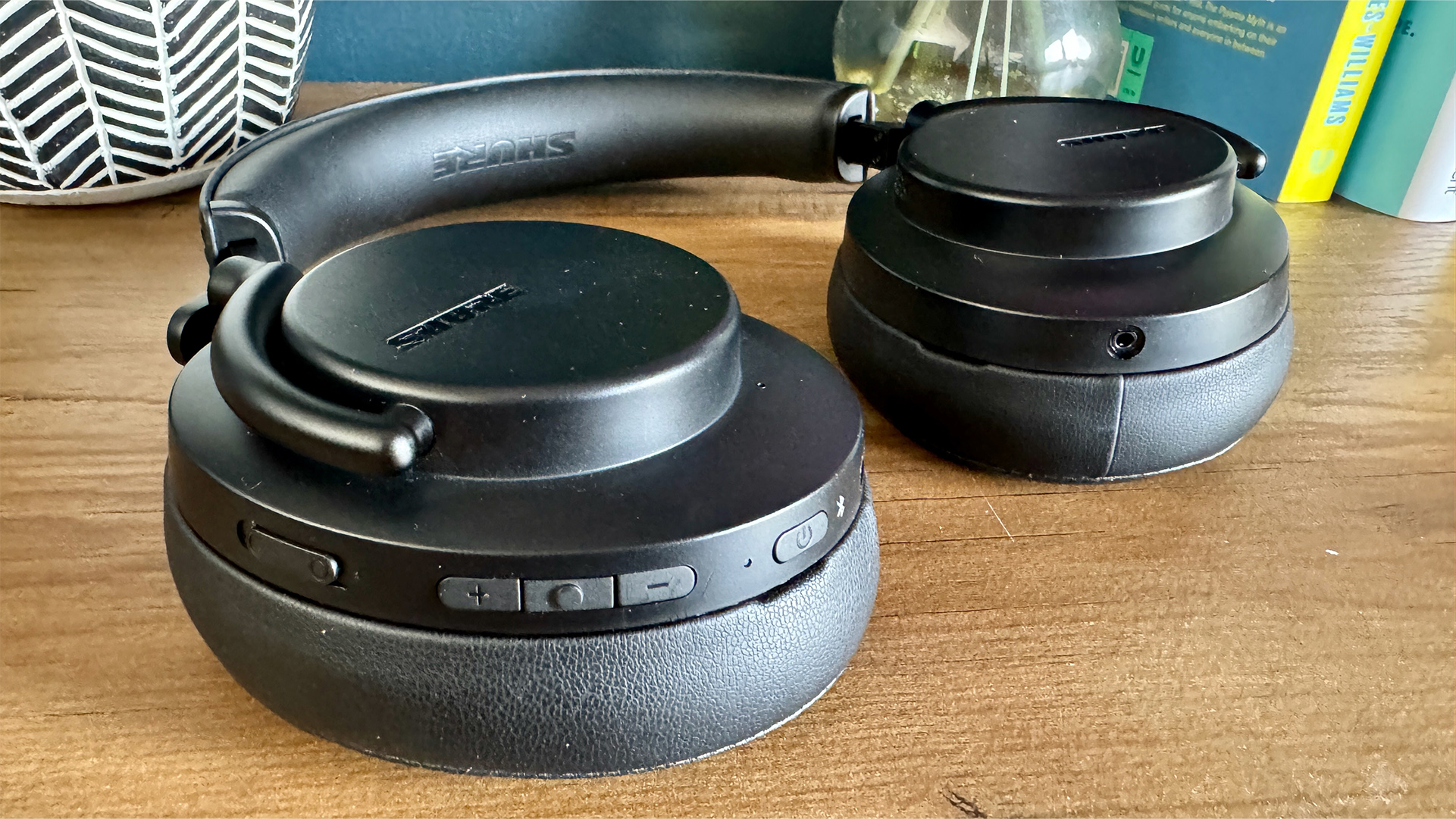
The feature set on the Shure Aonic 50 Gen 2 is a bit of a mixed bag, with some must-haves, a handful of nice-to-haves and a couple of real omissions.
Let’s start with the latter, and probably the biggest miss here is the lack of an official IP rating. That means these are not headphones you’ll want to get caught in the rain with if you can help it, and we wouldn’t recommend taking them to the gym either. There’s also no wear sensor, something we usually like to see at this level.
However, battery life here is pretty impressive, and has been more than doubled since the last generation. You’ll get a solid 45 hours from a single charge – a claim which rings true in testing, and easily bests its competitors, including Sony’s WH-1000XM5 (up to 30 hours), the Bose QuietComfort Ultra Headphones (up to 24 hours) and Beats Studio Pro (up to 40 hours).
Charging is done via USB-C, but you can also use this port for wired music playback too – with support for playback up to 32-bit/384kHz files.
One of the new features this year is a Spatializer mode, which aims to bring more space and immersion to whatever you’re listening to through some clever audio tweakery. There are three presets to choose from depending on the content you’re listening to – Music, Cinema and Podcast – and, out of the box, the Spatializer setting can only be toggled on or off, or tweaked via the Shure Play control app.
The Music setting widens the soundstage and adds some space to instruments, Cinema removes some of that space but boosts the overall presentation for a more muscle-bound sound, while Podcast really focuses in on the mids, with a reduction in bass and treble, so the voices are – understandably – the star of the show.
Once inside the app, you can choose to change the slider controls to the Spatializer setting instead, but that will leave you with no on-headphone ANC control – so swap them out with caution.
ANC & call quality
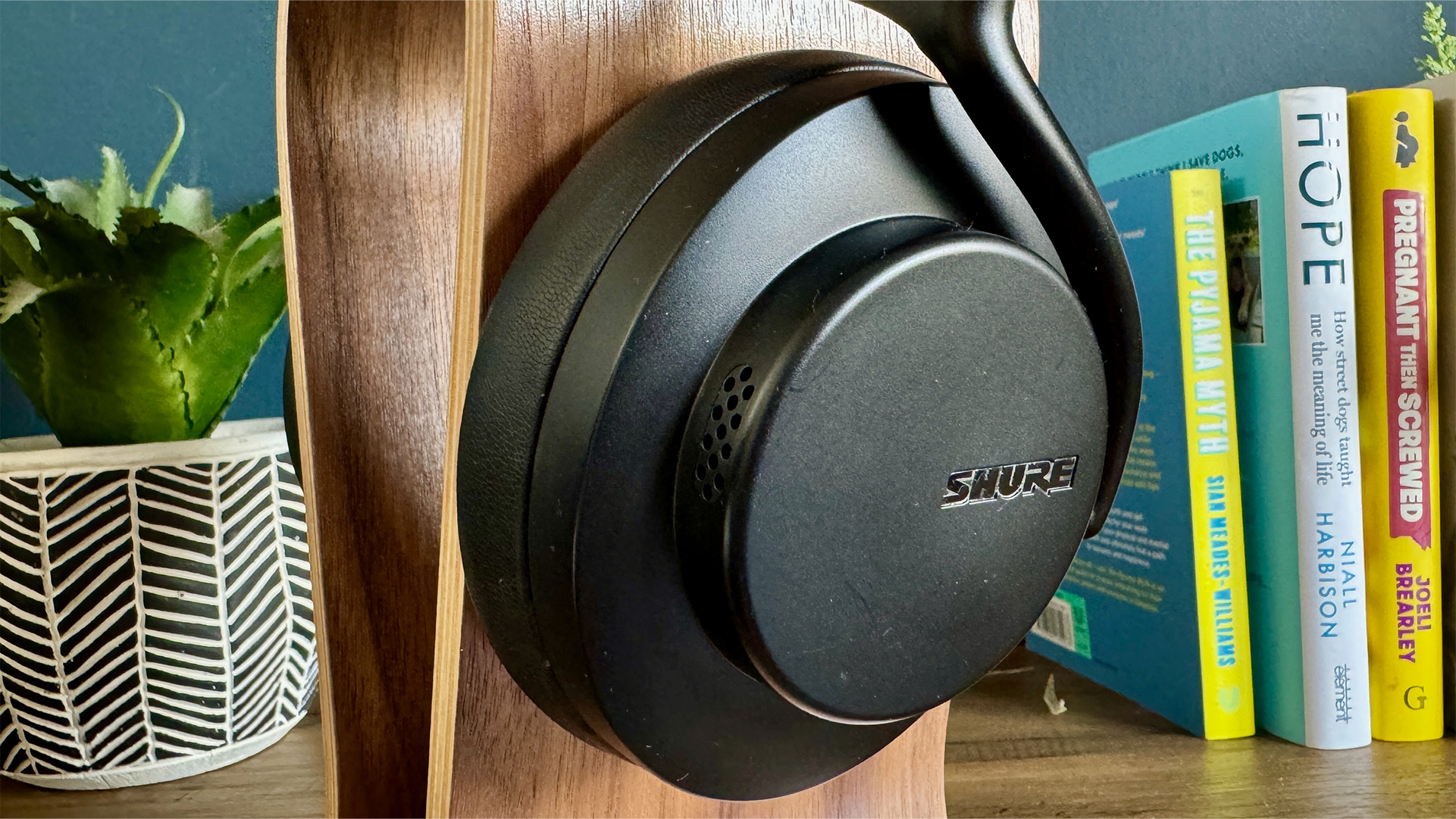
As for that noise cancellation – it’s merely okay. It has been improved since the last generation, and now offers the ability to tailor the ANC level more specifically to your needs, but it’s just not as capable as the very best in this space.
With ANC on, there’s the choice of Light, Moderate, Max and MaxAware (which is supposed to balance noise cancellation with the ability to carry on conversations), and when you switch to Environment Mode, there’s a slider in the app that allows you to tweak just how much of your environment you want to be kept in the loop with.
Unlike some headphones, there’s also the option to turn off noise cancellation completely should you wish.
However, even in Max ANC mode, the noise cancellation simply seems to reduce noise rather than cancel out a whole lot – you don’t get that deep silence that you’ll get from the likes of Bose’s QuietComfort range.
As usual, it’s the low transport rumbles that are the most effectively cancelled, so aeroplane noise should be fairly reliably nixed, but most of the noise that comes above that seems to be muffled rather than muted entirely. Their handling of wind is also pretty patchy, which can result in some fairly audible tearing in blustery weather.
If you need to stay aware of what’s going on around you, both Environment Mode and MaxAware mode offer that, though with a considerable amount of hiss alongside. It’s largely inaudible when playing music, but it’s more noticeable in those moments of silence than we are used to.
MaxAware also doesn’t seem to be the hybrid offering that Shure wants it to be. We were expecting something that blocks out general hubbub and noise but lets voices through, but while it does pinpoint voices and amplify them a little more than in Environment Mode, it also appears to basically let the rest of your surrounding noise in too.
Perhaps a more effective workaround for this is PausePlus, which switches to Environment Mode when you pause your music, allowing you to have quick conversations without removing your headphones. Once you press play again, the noise cancellation of your choice kicks back in.
This is another feature that is accessible via the app, so you should definitely download it to get the most from these headphones. It’s pretty slow to load, which is a little frustrating, but it’s filled with tweaks you can’t make to your headphone experience any other way.
It’s in the app that you’ll also find a choice of seven preset EQs, as well as a manual EQ option for more specific tweaking, plus there’s a Music Library. This will dig out the music and playlists you have saved on your device or in Apple Music, for in-app playback and control. No other apps are supported at the moment though.
There are six microphones in total here, which are used for noise cancellation and also, of course, phone calls. Call quality here is pretty good too, with the microphones doing a solid job of picking up the wearer’s voice, while also reducing surrounding noise considerably – even in busy, noisy areas. The only thing that really catches them out is the wind, but they aren’t alone in this.
Sound
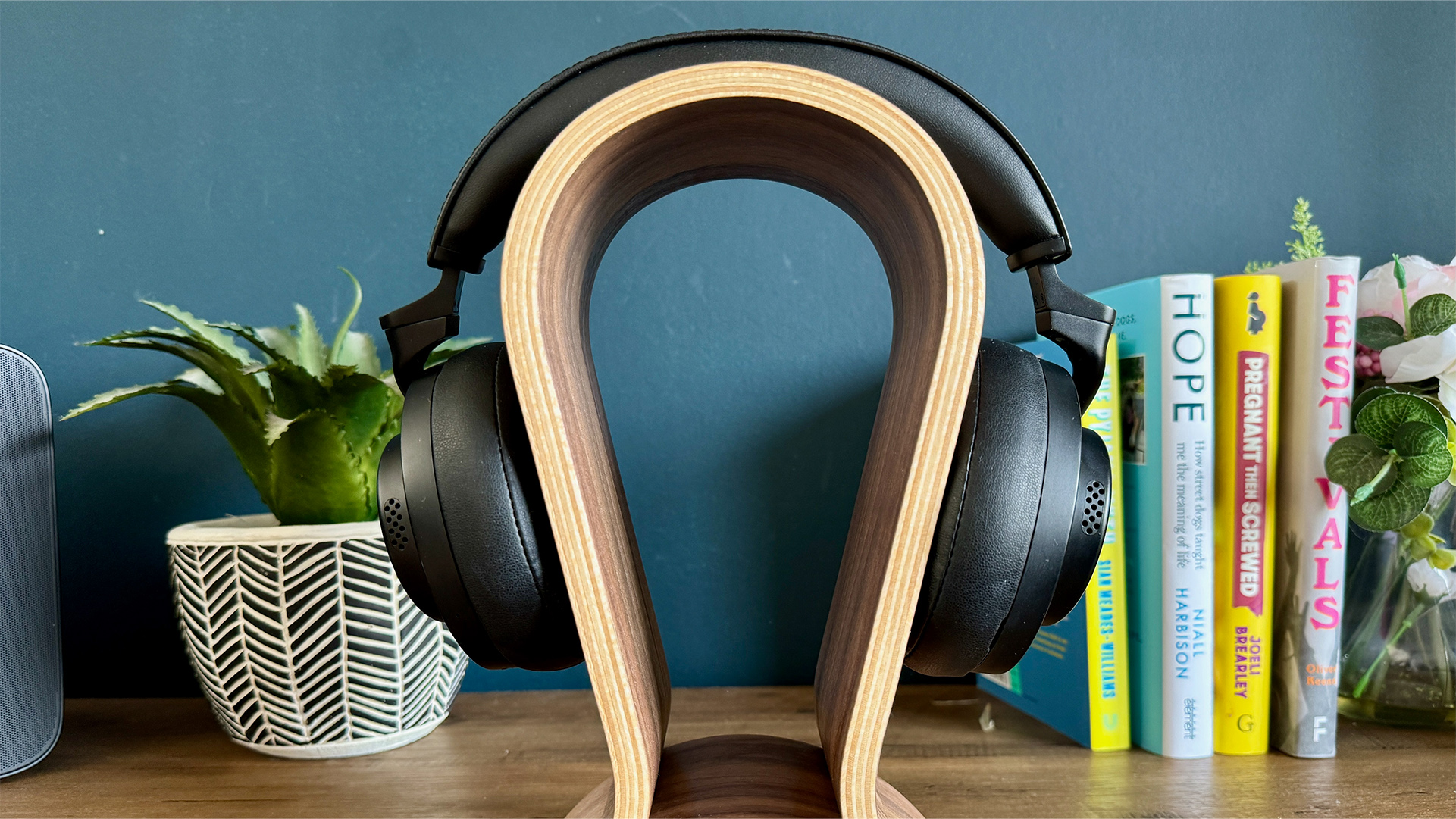
In each earcup there is a 50mm neodymium dynamic driver in charge of sound reproduction, with Bluetooth 5.2 on board for wireless playback and support for higher-res codecs like aptX Adaptive, aptX HD, Sony LDAC and Snapdragon Sound, if your source device supports it too.
The brand’s studio reputation pulls into clear focus the moment you put the headphones on, with real attention to balance, precision and clarity.
It’s worth noting that you will get an overall better performance with the ANC switched off or set to a lower setting than Max. With it on, the soundstage becomes smaller, the bass response fattens up a little and dynamics are squashed, particularly through the mids and treble. Turn it off and your music will sound like it’s got a new lease of life, which is worth considering when choosing how to listen to these headphones.
We play DARE by Gorillaz in MQA on Tidal and every part of the intricate instrumental arrangement is cleanly and neutrally presented, so much so that you can pick out and focus on individual strands of Damon Albarn’s creative thought processes throughout the busy mix.
The crunchy synth-y bassline pulses rhythmically with a dollop of richness and tons of texture, but it’s not overly powerful or boisterous in the mix. It acts as a solid foundation rather than an overpowering one, with the midrange nestled nicely alongside.
Vocals and instruments in this space are fully present and detailed but not pushed forward or emphasised like you might hear on other headphones, making for an even-handed presentation that nods to Shure’s sonic heritage.
This is something of a departure from the more bass-heavy tuning that’s become more popular in recent years, and anyone looking for that may want to dive into the EQ to get a bit more in this area. However, those who crave a more balanced profile with a focus on detail and insight will get that in spades here.
Try the same track through the Sony WH-1000XM5 and they arguably hold all the different strands of the track together better, presenting them as a cohesive, complete whole rather than something that might require critical evaluation. Everything is a touch richer too, vocals are more forward and there’s more drive and excitement across the board – but there’s no doubt the Sonys add a hint of their own flavour to how the recording sounds.
Switch things up to Iris by the Goo Goo Dolls, and while the guitar intro through the Aonic 50 Gen 2 is presented with layer upon layer of insight and detail, it pulls just a touch bright, which makes the overall presentation lean towards being tiring over time – particularly when the chorus kicks in and the mix becomes busier.
The same track on the WH-1000XM5 is a more comfortable experience, especially if you like your music loud. They may not tell you quite so much about the character of every instrument in the mix, but the upper registers don’t catch your ear in the same way.
You can improve this on the Aonic 50 by going wired – USB-C playback from Tidal takes the edge away from the treble for a less fatiguing listen. It’s only really noticeable on certain tracks anyway, but if your music interests are focused on guitar-heavy music, or you have a lot of less-than-ideal recordings, you'll likely find going wired improves your experience. With transparency at their core, if there is a weak link in the presentation, the Shure Aonic 50 Gen 2 will find it, and highlight it.
Whether wired or wireless though, the Aonic 50 Gen 2 time beautifully. Play Raye’s Worth It. and you’ll hear the strengths of these headphones – clarity, tight organisation and good attention to detail. While they might not have the energy of the Sonys, these aren’t a boring listen – far from it. There is an engaging fluidity to their presentation that can still draw you in, and still get your foot tapping – it just sticks a little closer to the script than you may be used to.
Verdict

If you’re looking for a pair of headphones that prioritise clarity and sonic balance over bass richness, the Shure Aonic 50 Gen 2 are well worth a look.
They aren’t perfect. There are some inconsistencies in their sound depending on how you’re listening – something that we had started to see less of elsewhere – and a dip in excitement too, but you can still get an engaging, detailed performance if you’re prepared to work to their strengths.
There’s also great battery life, impressive high-res codec support and an excellent companion app for tweaking, including an accomplished EQ if you like to dabble. However, noise cancellation is just okay here – if this is an important part of the reason you’re buying, you’ll want to look towards Sony or Bose for better options.
SCORES
- Sound 4
- Features 4
- Build 4
MORE:
Read our review of the Sony WH-1000XM5
Also consider the Bose QuietComfort Ultra Headphones
Read our Sennheiser Momentum 4 Wireless review







